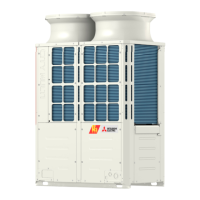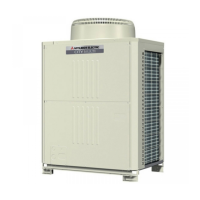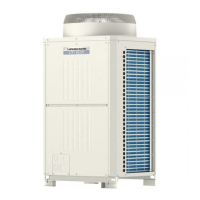What to do if Mitsubishi Electric PURY-P192 shows logic error?
- KKristen JimenezAug 31, 2025
If your Mitsubishi Electric Air Conditioner is showing a logic error, reset the logic board and check the configurations.

What to do if Mitsubishi Electric PURY-P192 shows logic error?
If your Mitsubishi Electric Air Conditioner is showing a logic error, reset the logic board and check the configurations.
How to fix open phase in Mitsubishi Electric PURY-P192?
If your Mitsubishi Electric Air Conditioner shows an open phase, check the phase connections and rewire as necessary.
How to fix communication error between device and transmission processors in Mitsubishi Electric Air Conditioner?
To resolve a communication error between the device and transmission processors in your Mitsubishi Electric Air Conditioner, check the wiring connections and replace any damaged cables.
How to fix temperature sensor fault in Mitsubishi Electric Air Conditioner?
If there is a temperature sensor fault in your Mitsubishi Electric Air Conditioner, replace the faulty temperature sensors.
How to fix RPM error/motor error in Mitsubishi Electric PURY-P192?
If you are getting an RPM error or motor error on your Mitsubishi Electric Air Conditioner, check the motor operation. Replace the motor if it is faulty.
How to fix heatsink overheat protection in Mitsubishi Electric PURY-P192?
If your Mitsubishi Electric Air Conditioner is experiencing heatsink overheat protection, check the cooling systems and make sure there is adequate airflow.
What to do if Mitsubishi Electric Air Conditioner has overload protection?
If your Mitsubishi Electric Air Conditioner is experiencing overload protection issues, assess the load conditions and reduce the load if necessary.
| Brand | Mitsubishi Electric |
|---|---|
| Model | PURY-P192 |
| Category | Air Conditioner |
| Language | English |
Crucial safety guidelines for installation, electrical work, and unit handling.
Precautions for refrigerant leaks, ventilation, and installation environments.
Specific requirements for piping materials, flare processing, and exclusive tools for R410A.
Guidelines for refrigerant charging and the use of vacuum pumps.
Safety advice on installation location, environment, and hospital installations.
Restrictions on the unit's intended purpose and usage.
Critical guidelines for electrical safety, grounding, wiring, and component usage.
Safety measures for handling, drain pipes, and packing material disposal.
Essential preparation steps and safety during test runs.
Precautions for touching refrigerant pipes and operating with panels removed.
Steps to check system refrigerant type, symptoms, and prepare necessary tools.
Warnings about refrigerant leaks, poisonous gas formation, and handling notes.
Details tools for R410A, including those with restrictions and prohibited tools.
Information on tool compatibility and usage guidelines for R410A.
Details copper pipe materials, types, and radial thickness requirements.
Specific requirements for flare processing and nut dimensions for R410A.
Proper storage location and sealing methods for pipes to prevent contamination.
Strict procedures and reasons for specific brazing techniques.
Additional notes on brazing materials and practices.
Strict guidelines for performing the air tightness test correctly.
Notes on leak detectors and rationale behind test procedures.
Specifies the type of vacuum pump and precision of vacuum gauge needed.
Details the required evacuation time and special drying steps.
Explains reasons for liquid phase charging and cylinder notes.
Details chemical properties, composition, and pressure characteristics of refrigerants.
Safety aspects, including toxicity, flammability, and ODP.
Specifies oil types for HFC systems and the effects of contaminants.
Details compatible indoor and outdoor unit combinations.
Details cable types and maximum lengths for control wiring.
Procedures for setting unit switches and addresses.
Defines limits on refrigerant pipe lengths for optimal performance.
Identifies and describes outdoor unit parts and refrigerant flow.
Explains the layout and components within the control box.
Diagrams of the outdoor unit's circuit boards.
Compares functions and specifications of MA and ME remote controllers.
Procedures for group and interlock settings using ME remote controller.
Procedures for interlock settings using the MA remote controller.
Provides the electrical wiring diagram for the outdoor unit.
Electrical wiring diagram for the BC controller.
Electrical wiring diagram for the transmission booster.
Diagrams illustrating the refrigerant flow paths within the system.
Explains the function of key parts within the refrigerant circuit.
Explains the purpose and default settings of dipswitches.
Details how to control the operation of the outdoor unit.
Methods for controlling the BC controller.
Essential checks before initiating the test run.
Step-by-step guide for performing the test run.
Procedures for adding or removing refrigerant.
Comprehensive list of error codes and their definitions.
Procedures for responding to remote controller error messages.
Troubleshooting guidance for major system components.
Steps for identifying and rectifying refrigerant leaks.
Detailed instructions for replacing the compressor.











